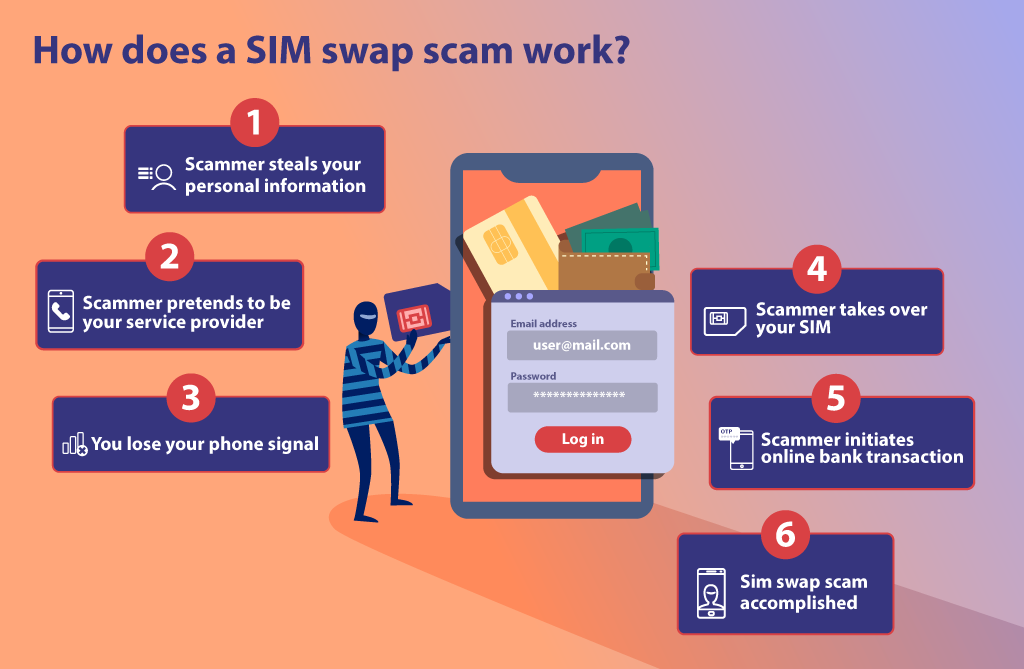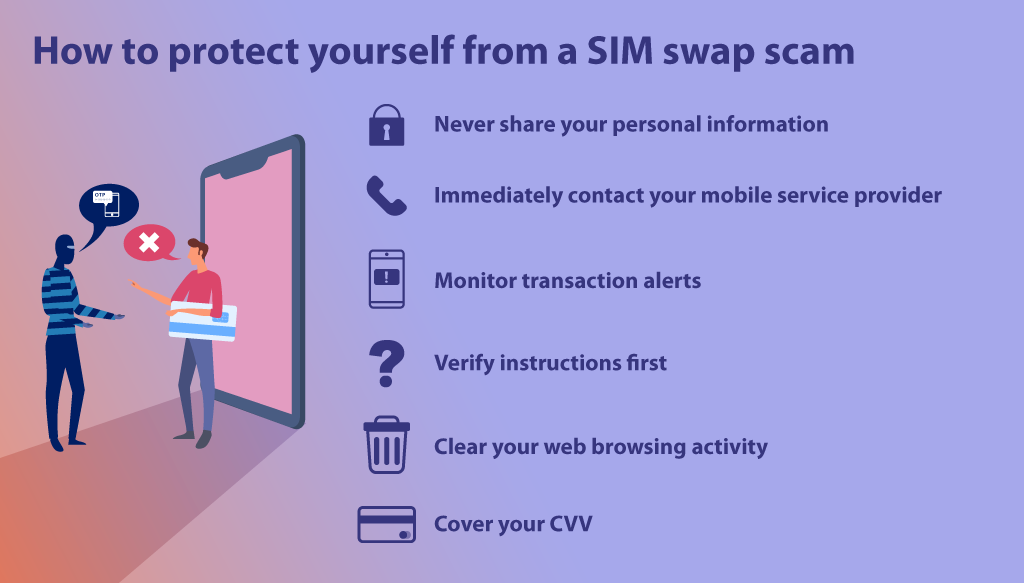When you are online, nothing is completely private. Signing up to social media accounts and websites requires you to provide personal information that scammers can harvest, making you susceptible to schemes like the SIM swap scam.
Find out how this scam works to prevent it from happening to you.

How does a SIM swap scam work?
Scammer steals your personal information. By trawling through social networks and other online channels, the scammer obtains your contact details like your name, address, mobile number, and other sensitive information they can find.
Scammer pretends to be your service provider. Claiming to be an agent of your service provider, the scammer calls or texts you to offer a SIM upgrade or asks you to do the following: provide a One-Time Password (OTP), turn off your phone, send back a text, or hold the line.
You lose your phone signal. After the call or text, you lose your phone signal or your SIM stops working.
Scammer takes over your SIM. While your phone signal is off, the scammer may have requested for a SIM replacement of your registered mobile number from your service provider.
Scammer initiates online transactions that require OTP. After taking over your SIM, the scammer attempts a bank transaction, a purchase transaction, or any transaction that requires authentication through OTP via SMS.
SIM swap scam accomplished. Once the scammer receives the OTP, they can make various transactions like logging in to your bank accounts, making money transfers, and shopping online.

How to protect yourself from a SIM swap scam
1. Never share your personal information, especially sensitive banking details like OTPs, user IDs, passwords, card details, and card verification value (CVV). Anything you divulge online can become available to the public no matter how secure a website claims to be. Consider it unsafe to save personal information during a purchase checkout.
2. Immediately contact your service provider if your SIM suddenly stops working or you lose your phone signal. Ask if there has been a request to update your mobile information or upgrade your SIM, and cancel it right away to prevent financial loss.
3. Monitor transaction alerts. Make sure your email and mobile are configured to receive bank notifications and alerts. If you’re notified about a transaction that you didn’t make, call your bank right away.
4. Verify instructions first. Do not follow instructions given through call, text, or email asking for your personal information, especially urgent requests or a sudden account deactivation that requires confirmation. Call your bank or service provider to verify such requests.
5. Clear your web browsing activity after making online bank transactions and use private browsers whenever possible, especially if you’re using an unsecured connection like public WiFi or computers.Stay vigilant and updated on the ever-evolving forms of scams to protect yourself from falling victim to fraud.